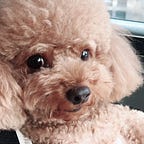Selective breeding has been used worldwide for years to pass down certain traits that serve specific purposes. Dogs were the first domesticated animals; they were early used as hunters, herders and guardians of sheep and cattle, protectors of families and children, as well as simply campanions and pets. In the modern day, dogs are mostly bred for their appearance and tameness/relationship to humans. This leads to Linebreeding — a method of inbreeding in which desired characteristics are accentuated by mating dogs that share an ancestor, thereby increasing genetic purity.
The keeping and intensifying of specific traits and the inbreeding that follows results to little to no genetic variety, passing along defected genes to the progeny. Inbreeding, as well, causes genetic defects and mutations, and makes them more suspectible to diseases. The continuous strive to breed dogs to the “perfect standard” — appearance and temperament wise — is necessary to ensure that the breed consistently is able to serve its original purpose, as kings of late empires and modern day consumers alike expect certain distinguishing traits and behaviors. This is a major contribution to the inbreeding trend that prevails to this day.
Dalmatians, for example, were bred as coach dogs. Their unique spotted coat, friendliness, affinity with horses, and endurance allows them to trot alongside horse-drawn carriages. But these traits cause severe health problems for the dalmatian: the spotted coat can lead to congenital deafness and hyperuricosuria, in which their livers have trouble breaking down nitric acid and leads to the formation of kidney and bladder stones. Many dalmatian puppies are born either partically or fully deaf, as many piebald animals are. Scientists encourage breeding only between able-hearing parents to reduce such risks. HUU is an inherited disease that all pure-bred Dalmatians suffer from. In 1973, Dr Robert Schaible started the Dalmatian/Pointer Backcross Project in an attempt to eliminate the gene defect. 7 years and 5 generations of backcrossing later, Dr Schaible breeded low uric acid dogs that looked practically identical to purebred dogs (with high uric acid genes) and applied to register his dalmatians to the American Kennel CLub. Despite its approval, he faced multi-sided resistance. Critics refused to accept his dalmatians as they were not purely bred: it was apparent that many valued breed purity over health when it came to dog selection. American show enthusiasts refused to acknowledge the backcross breed; two British Dalmatian clubs called the AKC’s decision to allow Julie Evans to display Fiona “arrogant and unacceptable” in 2011. Today, the low uric acid dalmatians throughout Europe and the UK descend from the Backcross project, but most dog enthusiasts and Dalmatian breeders still refuse to consider backcross Dalmatians as equally worthy as purebred Dalmatians that suffer from high uric acid levels.
Bulldogs, in particular, had the most drastic alterations to its original build as a result of excessive breeding and selection. Along with the rise of dog shows, bulldogs in the early 20th century transformed into an unhealthy breed with short, bowed legs, a large head, and a short snout/flattened muzzle, apparently to imitate the face of a human child for further entertainment in bull baiting. Reproducing without human assistance became nearly impossible: artificial insemination is often used as mating became difficult due to the change in bone structure, and Cesarean section is performed to up to 95% births because bulldog puppies have heads that are too large for the birth canal. It is said that bulldogs may have gotten into extinction if not for artificial insemination. The respiratory problems that a third of bulldogs suffer from,general heat intolerance due to the inability to regulate body temperature through panting, hip dysplasia, and other problems with their heart, hips, eyes, and skin make them the unhealthiest breed with a median life expectancy of 6.25 years (Kennel Club, 2004). The extreme changes to its proportions make health improvement efforts even more difficult due to the lack of genetic diversity.
Other dog breeds also have inherited health issues that persists through generations. The sloping backs of german shepards and saint bernards cause hip dysplasia, and fragile joints and constant knee dislocations are worringly common in toy and minature breeds.
Scientists propose that it falls under dog breeders’ responsibility to ensure that next genereations of breeds are healthy and put the importance of that above breed purity. It is also to say that customers and puppy buyers are often ignorant and choose to turn a blind eye when it comes to unethical breeding practices; they may be unaware of the underlying genetic issues that belong to the cute puppies. They can ask for medical tests and family history of diseases to ensure that the puppy they are to purchase do not have inherited genetic diseases and also put pressure on the current system to change and create future generations of healthy pups.
Sources
https://www.thefield.co.uk/gundogs/dalmatian-health-problems-spot-difference-39992
